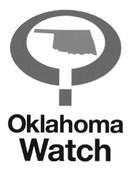Daily nasal swabs and layers of gloves, masks and other protective equipment became the norm for nursing home staff at the height of the COVID-19 pandemic.
For some, these demands remain a reality and are part of what’s driving workers out of the industry leaving aging Oklahomans without proper care.
Low pay and high stress have left more than 30% of the state’s nursing homes short-handed, according to the latest Centers for Medicare and Medicaid Services data.
That means increased work for the remaining staff. Less time spent with each resident. And lower quality of care.
Staff shortages are affecting homes in rural, urban and suburban communities. Without workers, facilities are forced to hire temporary staff at nearly double the pay and cut back on residents, which reduces their income and has led to the closure of at least six nursing homes since 2021.
Two additional homes in Oklahoma City and Ardmore sit empty but have not officially closed, said Steven Buck, who represents the state’s for profit nursing homes at Care Providers Oklahoma.
Rural communities are hit especially hard by these closures, said Mary Brinkley, who represents nonprofit nursing homes at LeadingAge Oklahoma.
When Servant Living Center in Medford closed in the fall of 2021, it was the only nursing home in the town of 988 people near the Kansas border. The nearest alternative for local families who needed to find a new home for their loved one was more than 30 miles away. And if those beds were full, it would be even further.
Low pay and difficult working conditions have been building within the industry for years, but they intensified during the pandemic, Buck said.
Nurses, aides, cooks and housekeepers risked their own health and the health of their families to care for nursing home residents as COVID ravaged group homes across the state, taking the lives of 2,594 residents and 65 staff, federal data shows.
Care Providers Oklahoma and LeadingAge Oklahoma, joined by the state hospital and nurses associations, asked lawmakers for $500 million in federal pandemic relief funds to address “a debilitating healthcare worker shortage seriously exacerbated by COVID-19,” according to its funding application. The request was among 1,440 applications vying for the second phase of American Rescue Plan Act funding given to the state. Legislators have dolled out most of the $1.87 billion in taxpayer funds. The worker shortage request was not among them. About $85 million remains uncommitted.
This spring, the legislature allocated $4.5 million in COVID relief funds to Care Providers Oklahoma for workforce training and additional funding to nursing schools.
Buck and Brinkley warn that more is needed, and fast, as Oklahoma’s elder population continues to increase. Otherwise, families will be left to pay for expensive inhome care or may be forced to quit their jobs to stay home and care for their loved ones, they said.

